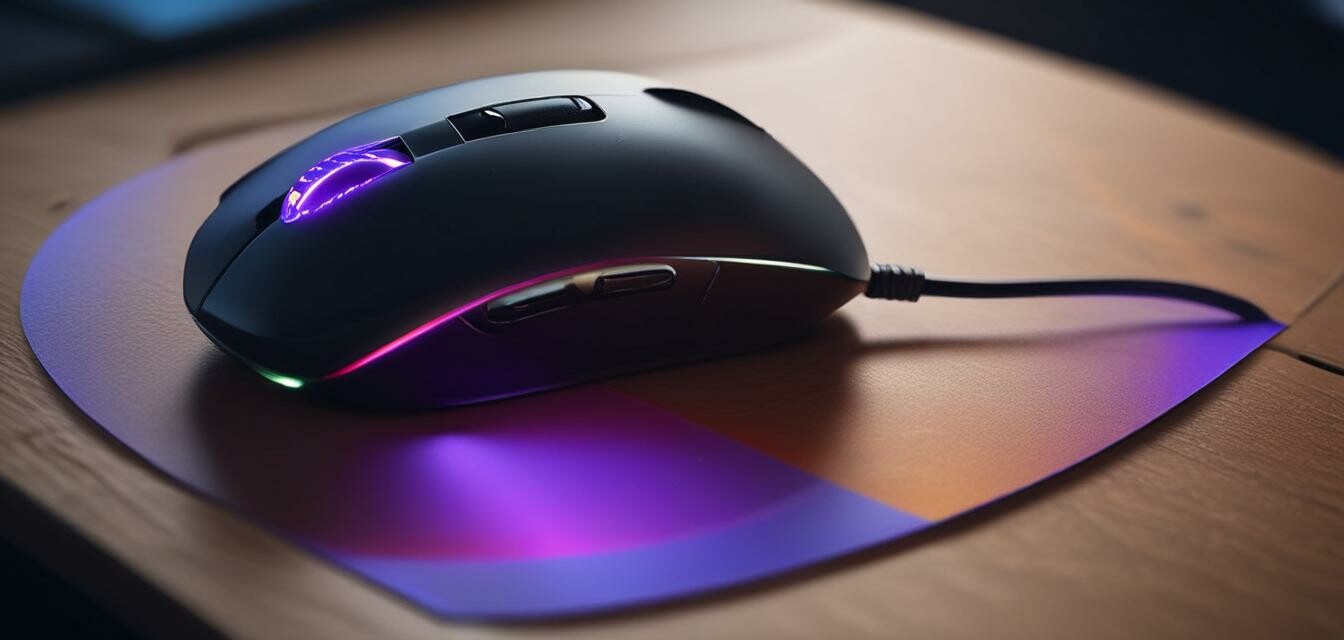
Key features to look for in a gaming mouse
Key Takeaways
- Sensor type and DPI settings significantly affect performance.
- The grip style influences comfort and control.
- Customizable buttons provide a competitive edge.
- Weight and ergonomics are crucial for long gaming sessions.
- RGB lighting can enhance the gaming experience, though it’s mostly aesthetic.
When it comes to enhancing your gaming setup, selecting the right gaming mouse is essential. A good gaming mouse not only improves your performance but also adds a level of comfort during those long gaming sessions. By understanding the key features to consider, you’ll be equipped to make an informed decision. Below are the essential elements you should look for when purchasing a gaming mouse.
1. Sensor type
The sensor is one of the most crucial aspects of a gaming mouse. There are two main types of sensors: optical and laser, both with their pros and cons.
| Sensor Type | Advantages | Disadvantages |
|---|---|---|
| Optical | Responsive, great for fast-paced gaming, less prone to acceleration issues. | Can struggle on reflective surfaces. |
| Laser | Works on various surfaces, good for high DPI settings. | May have acceleration issues, which can affect precision. |
2. DPI settings
DPI (dots per inch) measures how sensitive your mouse is to movement. A higher DPI means your cursor moves further with less physical movement of the mouse. Many gaming mice offer adjustable DPI settings for flexibility depending on the game style or your personal preference.
- Low DPI (400-800): Ideal for precision tasks like sniping.
- Medium DPI (800-1600): Balanced for general gaming.
- High DPI (2000+): Useful for fast-paced action games where quick reflexes are critical.
3. Grip style
Your grip style greatly affects your comfort level while gaming. Here are the three common grip styles:
- Palm Grip: The entire hand rests on the mouse, providing more control.
- Claw Grip: Only the fingertips and part of the palm touch the mouse, allowing for quick movements.
- Fingertip Grip: Only your fingertips touch the mouse, offering maximum agility.
4. Customizable buttons
Many gaming mice feature additional buttons that can be customized for different functions, allowing for greater control in-game. Consider the benefits:
- Map keys or macros for quicker in-game actions.
- Easily switch between sniper mode and regular firing.
- Enhance functionality across different games.
5. Weight and ergonomics
A comfortable gaming mouse is essential, especially for those long gaming sessions. Consider the following:
- Adjustable weight systems allow you to tailor the mouse to your preference.
- Ergonomic designs can reduce strain during extended usage.
- Shape and size should fit your hand comfortably.
6. RGB lighting
For many gamers, RGB lighting is more than just aesthetic—it enhances the gaming environment. While it doesn’t affect performance, it adds a unique flair to your setup.
Conclusion
Choosing the right gaming mouse involves many factors, from sensor type and DPI to grip style and ergonomics. Investing in a quality mouse tailored to your gaming style can significantly enhance your gaming experience. To explore more about essential gaming gear, check out our other Buying Guides.
Pros
- Improves gaming performance and speed.
- Customizable features enhance user experience.
- Can decrease injury risk with ergonomic designs.
Cons
- Can be expensive, especially high-end models.
- Customization options may be overwhelming for beginners.
- Compatible software may be required for maximum functionality.
Tips for beginners
- Try out different grip styles to see which suits you best.
- Consider a mouse with adjustable weights for personalized handling.
- Start with a lower DPI and adjust it based on your comfort level.
